The Origins of the Clarinet
The modern clarinet
From classical music to jazz
The clarinet, which boasts the largest register of all wind instruments, is related to the flute, the oboe, and the bassoon. In an orchestra, the clarinet takes on both solo roles and the middle register of the woodwind part, while in music for wind instruments the clarinet assumes a leading role (along with the trumpet).
Due to its warm timbre and all-action playing style, it is also used as a solo instrument in genres such as swing jazz.
The clarinet family
The B♭clarinet
The popular B♭clarinet, which has excellent functionality overall, is naturally used for solo and orchestral roles, and is also a major force in music for wind instruments.
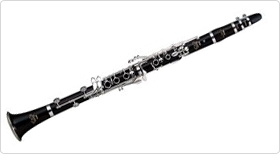
YCL -853IIV
The A clarinet
The A clarinet is an essential orchestral instrument, and many solo pieces and chamber-music works have been written for it as well.
It is only seldom used in music for wind instruments. With its deep, somewhat somber sound and its gentle tonal quality, it is used in works such as Mozart concertos. The fingering on an A clarinet is the same as on a B♭clarinet, and the same mouthpiece is used on both instruments.
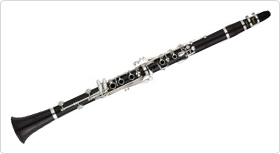
YCL-Ideal GA
The E♭ clarinet
Since the E♭clarinet has a high pitch (a fourth higher than the B♭clarinet), it is difficult to hit the right notes. Although it does not have as wide a range of expression as the B♭clarinet, the E♭clarinet possesses a bright, sharp sound. As a solo instrument it creates dramatic effects or expresses emotional excitement, and as part of an ensemble it lends breadth of timbre. It is used in both music for wind instruments and in orchestral music.
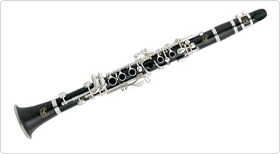
YCL-881
The alto clarinet (E♭)
The instrument is pitched an octave lower than the E♭clarinet, and in major compositions for wind instruments it is used to provide lower-pitched re-enforcement for the B♭clarinet. It possesses a deep, mellow timbre.
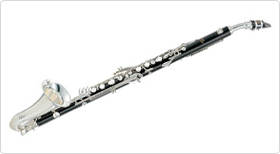
YCL-631 II
Bass clarinet
The instrument is pitched an octave lower than the B♭clarinet. It possesses a powerful sound in the lower registers, and since there is greater freedom to vary between playing loudly and softly than there is on the bassoon (which has the same register), in large-scale compositions for wind instruments the bass clarinet plays a supporting role to the entire woodwind section. Its characteristic timbre is popular in both orchestral music and jazz, and it is often used in both genres.
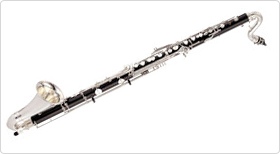
YCL-621 II
Musical Instrument Guide:Clarinet Contents
Structure
How the Instrument is Made
Choosing an Instrument
Trivia
- "I Broke My Clarinet" is a French folk song
- Inspiring composers
- In Italy, a single B♭ clarinet
- At one time, most clarinets were made of boxwood
- In vogue in the 1900s-the metal clarinet
- A transparent clarinet?
- Famous clarinet works: concertos
- Famous clarinet works: chamber music
- What is the relationship between hertz and cents?
